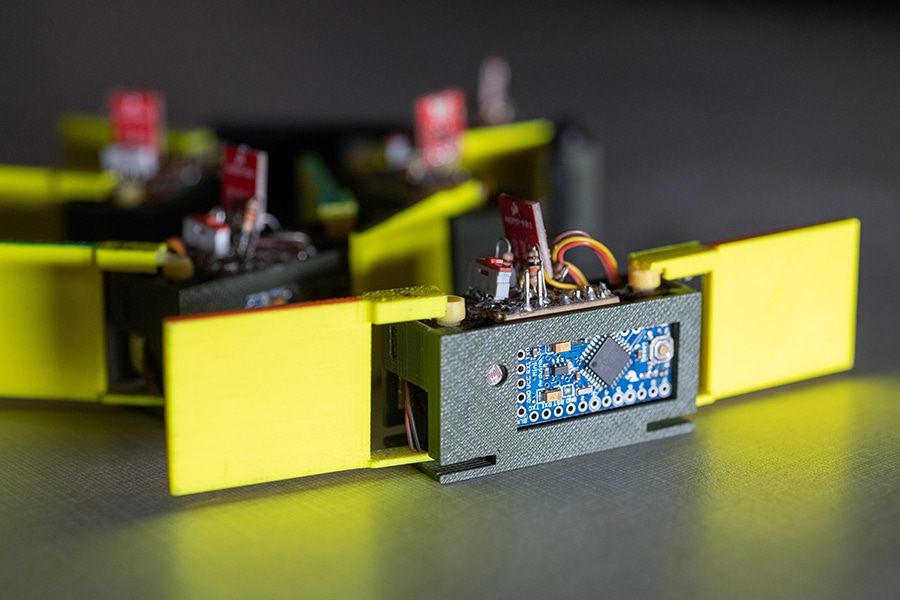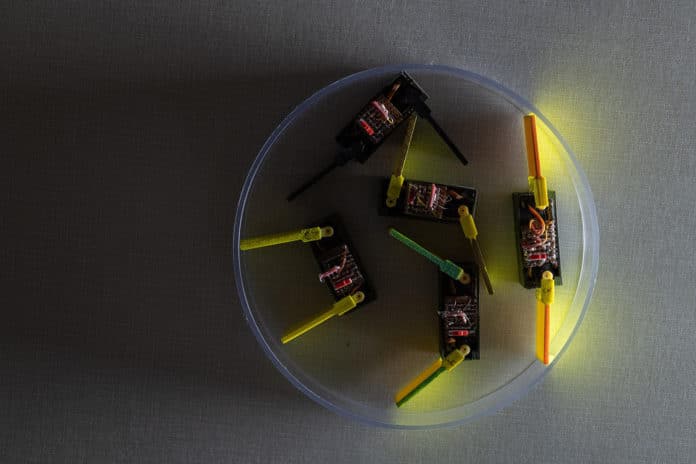Building a robot typically requires carefully combining components like motors, batteries, actuators, body segments, legs, and wheels. Now Georgia Tech scientists have built a robotic system that allows several robots to attach and form a larger robot.
They have developed some little swarm robots called “smarticles” that can do just one thing – flap their two arms. But once you put them together in a bunch, they push each other and form a robophysical system known as a “supersmarticle” that can move by itself.

A single 3D-printed smarticles (smart active particle) weighs around 35 grams. Adding a light or sound sensor allows the supersmarticle to move in response to the stimulus – and even be controlled well enough to navigate a maze. When little flappy bits are activated, each smarticle can move slightly. However, a single one mostly just moves around in a square and then will gradually drift in a mostly random direction over time.
This could allow for increased mobility in unpredictable situations, as well as it could be a cheaper method for carrying out tasks. Besides, these robots don’t rely on a central processor and therefore have the potential to continue functioning even if one of the many parts is broken.
To explore further, the team used a 3D printer to create battery-powered smarticles, which have motors, simple sensors, and limited computing power. The devices can change their location only when they interact with other devices while enclosed by a ring.
In future work, they envision more complex interactions that utilize the simple sensing and movement capabilities of the smarticles. This kind of robotics could eventually have applications in transport, military and rescue missions, according to the researchers.
